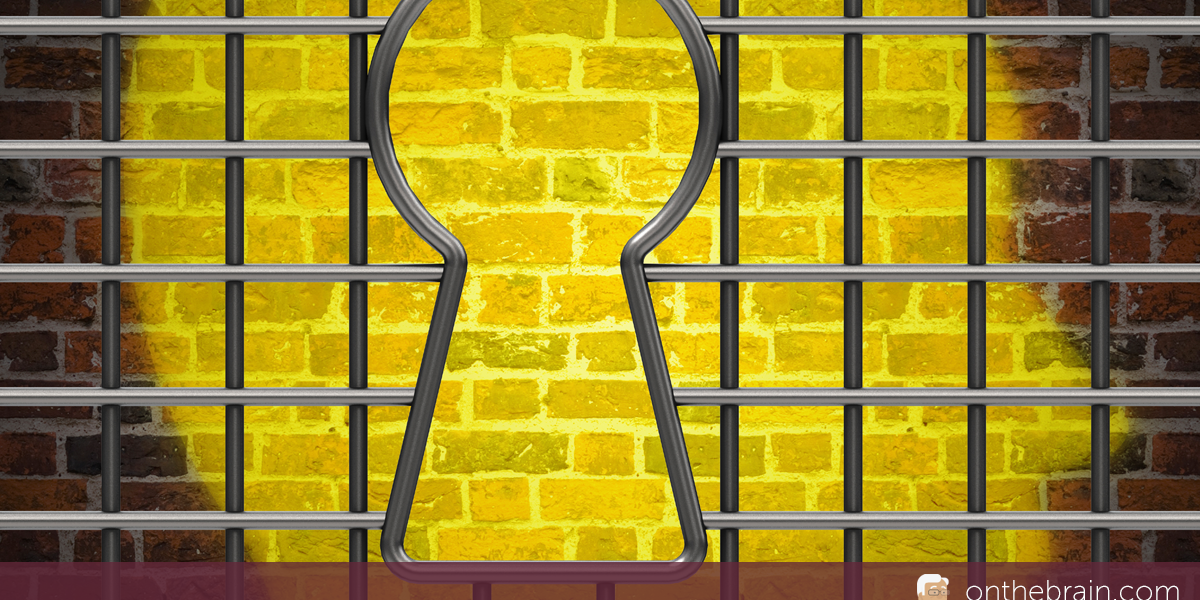I would guess that a lot of citizens were pretty angry when they read the tragic story of Kalief Browder in The New Yorker this month. I certainly was. If you haven’t read it, allow me to summarize: a young man near the end of his sophomore year in high school is accused of robbery and assault under dubious circumstances. He insists on his innocence, and repeatedly refuses to agree to a plea bargain. The price he pays ends up being three years on Rikers Island, two of them spent in solitary confinement.
But the real price he pays is not measured merely in time. His true tale is all about neurological damage. And the real story is, of course, far larger than Kalief Browder’s personal story. It’s about societal cruelty, short-sightedness, and stupidity. That real story is all about a million (or more) Kalief Browders.
On another level, the story is about us. After all, why doesn’t the average citizen, and why don’t the powers that be in our great nation, understand the neurological consequences of an extended period of abusive juvenile detention on a young man (and a young brain) like Mr. Browder? Why don’t they understand that the toxic environment that he and his prison-mates have to endure on Rikers Island (and at juvenile facilities in most jurisdictions) is absolutely guaranteed to damage their (more often than not, already-seriously-compromised) brain(s)—and with it, destroy ANY real chance (without serious, intensive intervention, which almost never occurs) for a normal, healthy human life? In Mr. Browder’s case, judges and public prosecutors effectively, ignorantly, callously colluded in damaging his brain. How could they not be aware of their own crime? If their educational training has failed to inform them about the destructive neurological consequences of their actions, played out on an enormous scale across society, it should be brought to the dock.
For, after all, science tells us, in no uncertain terms, that systematically degrading a young plastic brain like Kalief Browder’s is, in its callous cruelty, a greater crime than the majority of felonies that brought those young offenders into prison in the first place.
For it IS criminal to degrade the plastic brain in ways that assure that you degrade a life, turn down the lights to a dim level, steal years of young fun and joy and education and socialization so crucial for normal neurological development, drive a crucial social epoch of life training into a psychopathic swamp, bring out the demons, raise the ever-present specter of suicide, and drive a brain to a place where insanity and addiction and continuous self-wounding and societal wounding are elevated from the probable to the nearly-certain.
We brain scientists know all about this. We’ve documented it, in rich detail. So why doesn’t the average person know about it? And more importantly, why don’t the judges and law enforcement officers tasked with juvenile offenses know about it?
I can only guess that as you read this (and certainly if you read Kalief’s story in The New Yorker) you would be quite willing to hold the authorities that let this happen up to the flames. But we’re also to blame, you, and I. Our responsibility arises because science tells us about how wrong this all is. How wrong it is to blame an individual, from a very young age, to let them know that their conduct problems are their fault, when we know full well (science tells us in no uncertain terms) that it arises, via brain plasticity, as a pretty reliable product of a high-stressful and/or abusive and/or degraded childhood. We blame them for their troubled childhood, from the time they enter school, pretty much until they die. Then when they DO offend so very predictably, we adopt pretty much the dumbest strategies, from a neurological perspective, for helping them get better. Instead we consistently do things that make it worse. Far worse.
And in an almost fantastic example of societal ignorance, we pile on still more blame and double up the neurological degradation when they so predictably re-offend. We imagine that doing all this is moral and upright! We convince ourselves that doing all this assures our safety.
Almost nothing could be further from the truth.
And almost no strategy could be more costly, in human or monetary terms.
Despite my efforts as a brain scientist, we scientists who know all about the brain damage that arises in children with abusive childhoods—or that are incurred for certain under conditions of constant stress and fear, extreme isolation and violent punishment lived out in a sea of psychopathy (which is that thing we call “prison”)—have failed so miserably in communicating how WRONG our approach to such human/neurological problems are. (I’ve tried to write about this earlier at this blog site, and in my book. And I’m currently working on a more focused book about it.)
Hey, and you’re to blame too, at least from this point forward. Because you should now be beginning to understand, from a brain plasticity perspective, from the level of scientific proof, how horribly wrong this is, for any other living, breathing, precious human individual. For the millions of Kalief Browders out there in the world that society works so systematically and so hard to destroy.
Let’s stop doing that, you, and I. As soon as possible.
(What should we be doing? I’ll try to begin to answer that question, in a subsequent blog post.)







